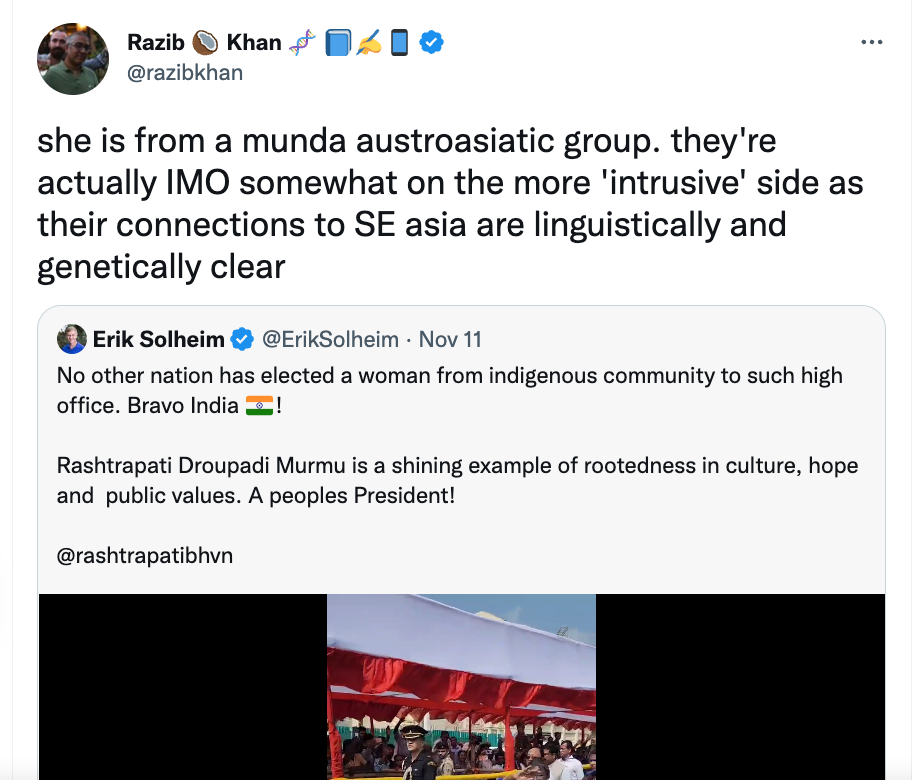
Periodically I get questions about whether the Adivasi are the “indigenous” people of the Indian subcontinent. The short answer is that they are not distinctive or more indigenous than most of their non-Adivasi neighbors. The President of India is from a Munda-speaking community, and these populations are arguably more culturally intrusive than Indo-Aryan or Dravidian-speaking populations.
More concretely, between about 4000 BC and 1 AD mixing occurred between many populations in the continent. Populations with West Eurasian affinities, with their closest relatives being the indigenous peoples of western Iran, expanded south and east from the Indus Valley zone. Meanwhile, populations with deep East Eurasian affinities, with the closest ties to the people of the Andaman Islands, seem to have pushed north and west. The Swat Valley transect shows increased steppe and “Ancient Ancestral South Indian” (AASI) ancestry over time, pointing to the integration of the subcontinent genetically and culture before 1 AD.
The highest proportion of the AASI ancestry in the mainland can be found among the Paniya and Paliyan tribes of the south, at about 75%. But even here 25% of the ancestry is attributable to the Indus Valley people. The Adivasi are not relict populations but emerge out of the same synthetic forces that resulted in groups like the Reddy or Patidar. Genetically they tend to have more AASI ancestry, but the same is true of many other groups.
Rather, the uniqueness of Adivasi seems to be their distance and marginalization from the Indo-Aryan-inflected societies that developed after 2000 BC. This includes the Dravidian-speaking cultures of the south, as even early Tamil had Sanskrit influences. In contrast, the Adivasi remained more insulated from these influences. The Munda in particular are distinct because not only do they speak a language that is more similar to Austro-Asiatic peoples of Southeast Asia, but their paternal lineage tends to be Southeast Asian. And, it is notable to me that Munda is almost entirely absent in Y chromosomal lineage R1a-Z93. I think this indicates that not only were they marginalized from broader Indic civilization, with distinct mythologies and folkways, but they marginalized and excluded outsiders as well from their solidities.